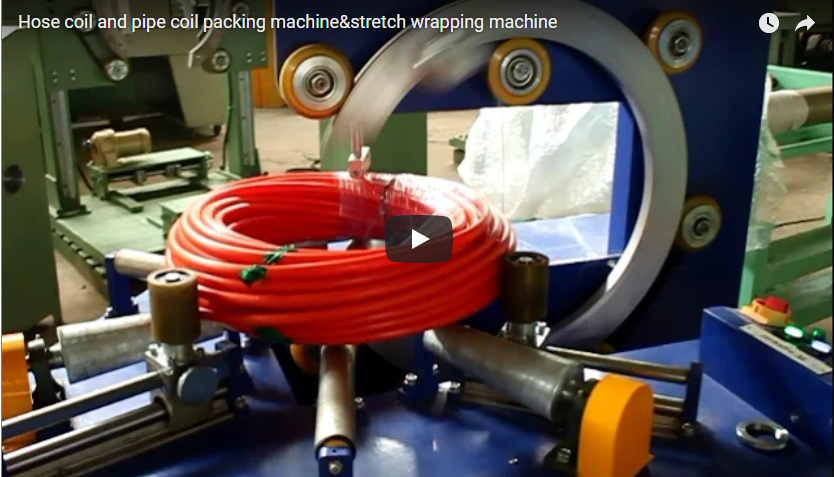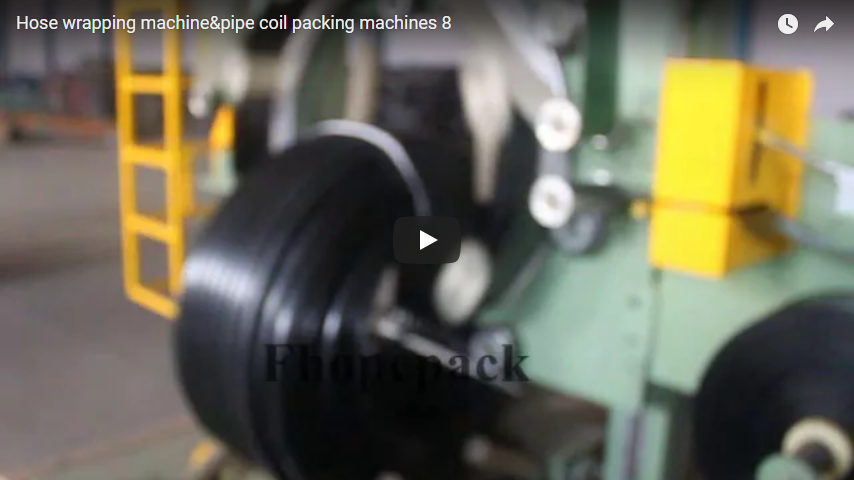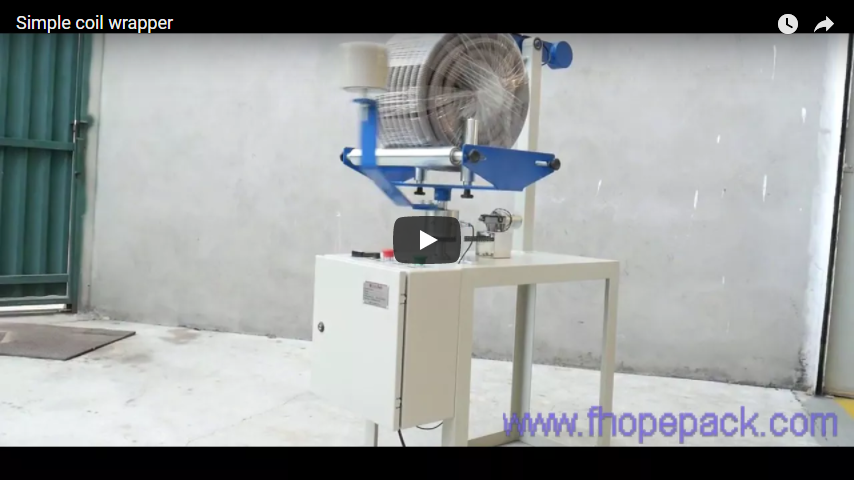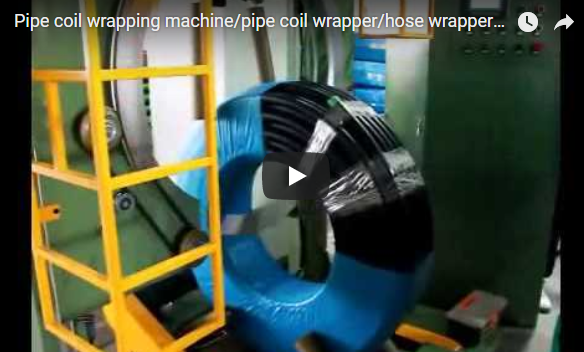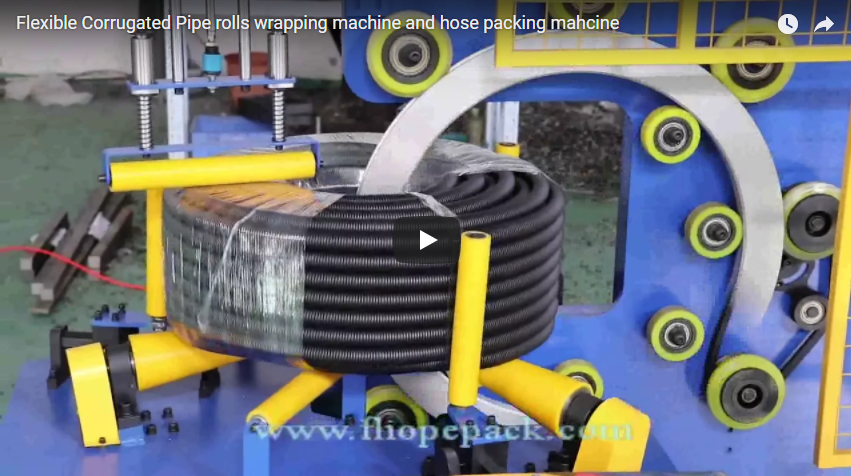Automated Hose and Pipe Coil Packaging: Enhancing Efficiency and Protection for Fabricators
In demanding fabrication and manufacturing environments, handling and packaging finished products like hoses and pipes can be a significant operational challenge. Manual coiling and wrapping are often labor-intensive, time-consuming, and can lead to inconsistent package quality, potentially damaging the product before it even reaches the customer. Automating this process offers a robust solution to these common pain points.
1. The Bottleneck of Manual Coil Handling
From personal experience in busy workshops, we know that manual packaging steps can easily become bottlenecks. Key challenges include:
- Labor Intensity: Coiling long lengths of hose or pipe and then securely wrapping them requires significant manpower and physical effort.
- Inconsistency: Manual wrapping often results in variable tension and coverage, leading to loose coils or inadequate protection.
- Product Damage: Improper handling or wrapping can cause kinks, scratches, or deformation, compromising product integrity.
- Safety Concerns: Repetitive motions and handling bulky coils can pose ergonomic risks to workers.
- Slow Throughput: Manual processes inherently limit the speed at which coils can be packaged, impacting overall production output.
2. Stepping Up with Automated Coil Packaging Systems
Automated hose coil packing machines and pipe coil wrapping machines are engineered to address these challenges directly. These systems typically integrate several functions into a streamlined workflow:
- Automatic Coiling: Precisely coils hoses or pipes to pre-set lengths and diameters.
- Coil Handling & Transfer: Automatically moves the finished coil to the wrapping station.
- Orbital Stretch Wrapping: Applies stretch film tightly and consistently around the coil's circumference, providing excellent protection and stability.
- Optional Strapping/Banding: Adds further security, especially for larger or heavier coils.
- Automatic Bagging/Sealing: Some systems incorporate automated bagging and sealing for enhanced environmental protection or specific packaging requirements, like those offered by Fhopepack's sealing machines for coil shrinking.
3. Key Technical Features to Consider
When evaluating automated coil packaging solutions, fabricators should look at key specifications:
- Coil Dimensions:
- Inner Diameter (ID) Range: Specify typical range, e.g., 200mm - 800mm
- Outer Diameter (OD) Range: Specify typical range, e.g., 400mm - 1200mm
- Coil Width/Height Range: Specify typical range, e.g., 50mm - 500mm
- Material Compatibility: Designed for materials such as PE, PEX, PVC, rubber hoses, corrugated pipes, and potentially flexible conduits. Confirm suitability for your specific product types.
- Wrapping Material: Primarily uses LLDPE stretch film. Options might include VCI film for corrosion-sensitive products. Check compatible film widths and core diameters.
- Control System: Typically utilizes PLC (Programmable Logic Controller) with an HMI (Human-Machine Interface) touchscreen for setting parameters (wrap counts, tension, overlap) and diagnostics.
- Automation Level: Ranges from semi-automatic (operator loads/unloads coil) to fully automatic integrated lines.
- Cycle Time: Varies based on coil size and wrap parameters, but significantly faster than manual methods. (e.g., 20-60 seconds per coil, depending on configuration).
4. Tangible Benefits for the Modern Fabricator
Investing in automated coil wrapping isn't just about new machinery; it's about process optimization and tangible returns:
- Enhanced Efficiency & Throughput: Dramatically increases the speed of packaging, eliminating bottlenecks and keeping pace with production.
- Reduced Labor Costs: Frees up personnel from tedious manual wrapping tasks to focus on higher-value activities. Automation significantly cuts down the man-hours needed per coil.
- Improved Product Protection: Consistent, tight wrapping minimizes damage from handling, storage, and transit. This translates to fewer customer complaints and returns.
- Professional Presentation: Uniformly wrapped coils present a more professional image to customers.
- Increased Consistency: Automated systems deliver the same high-quality wrap every time, ensuring reliability.
- Better Ergonomics: Reduces physical strain and potential injuries associated with manual handling and wrapping.
5. Fhopepack's Integrated Coil Packaging Solutions
Fhopepack offers a comprehensive suite of equipment designed specifically for hose and pipe packaging challenges. Their offerings include:
- Complete Hose Packaging Lines: Integrating coiling, conveying, and wrapping functions.
- Pipe Coil Packaging Machines: Tailored for various pipe materials and sizes.
- Automatic Coil Bagging Systems: Further reducing manual intervention and providing enhanced protection.
- Sealing Machines: For applications requiring shrink wrapping or secure sealing post-wrapping.
These solutions aim to deliver a fully automated approach, maximizing efficiency and minimizing labor costs for businesses handling coiled products.
Explore Fhopepack's hose packaging solutions
6. Considerations Before Implementation
Successfully integrating an automated system requires planning:
- Footprint: Ensure adequate floor space for the machine and associated conveyors or staging areas.
- Power & Utilities: Verify electrical and potential pneumatic requirements.
- Material Handling: How will coils be fed into the machine and removed after wrapping? Consider integration with existing production lines or robotic handling.
- Operator Training: While automated, staff will need training on operation, parameter setting, and basic maintenance.
- Return on Investment (ROI): Calculate the payback period based on labor savings, reduced product damage, and increased throughput.
7. Conclusion: Moving Towards Smarter Packaging
For fabricators dealing with hoses and pipes, transitioning from manual to automated coil packaging represents a significant step towards operational excellence. The gains in efficiency, consistency, product protection, and labor optimization provide a strong competitive advantage. By carefully selecting a system that matches production needs and integrating it thoughtfully, workshops can transform a potential bottleneck into a streamlined, value-adding process.
For inquiries about specific solutions:
info@fhopepack.com


